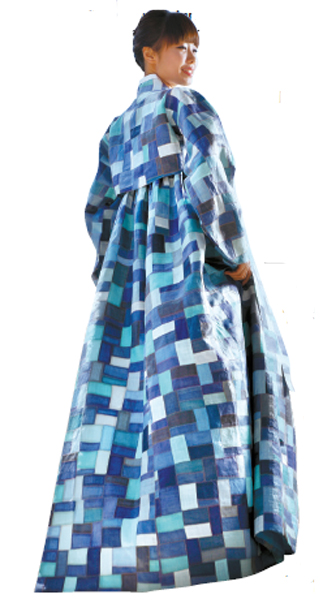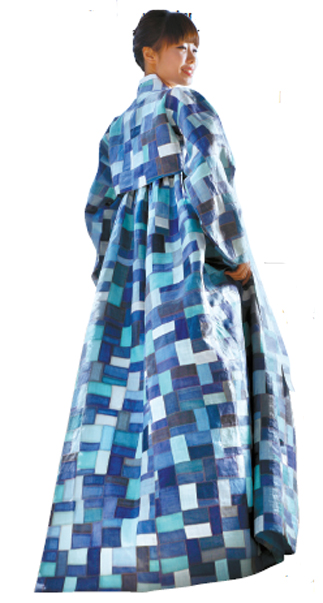Traditional clothing for the 21st century

Hanbok, or traditional Korean dress, by famous designer Lee Rhee-za will be shown at the upcoming festival. Provided by Model Center International
Want to check out the fashion styles of some of Korea’s most famous historic figures, such as Jumong (58 B.C.-19 B.C.), the founding monarch of the Goguryeo Dynasty (37-668 B.C.)?
Look no further than the Korean Hanbok Festival 2009, which will be held this weekend on the grounds of Deoksu Palace in central Seoul.
Models will strut down the runway sporting hanbok, or traditional Korean clothing, designed by noted local fashion designers and professionals who created costumes for heroes and heroines of famous epic dramas like “Jumong” (2006), “Empress Cheonchu” (2009) and “Queen Seondeok” (2009).
The TV shows, as their names suggest, revolve around famous female leaders. Cheonchu (964-1029) was an empress during the Goryeo Dynasty (918-1392), while Seondeok (?-647) was a queen during the Silla Dynasty (57 B.C.-A.D. 935).

A hanbok worn by actor Ha Ji-won, who played Hwang Jin-yi - a famous female entertainer during the Joseon Dynasty - in the eponymous KBS drama.
“Our goal is to help hanbok find its way back into the lives of Koreans,” said Toh Shin-woo, the president of Model Center International. “That would have to come before promoting it overseas.”
Toh, a former model, has been on the Korean fashion circuit since the 1960s.
In most households these days, hanbok are typically stashed in the back of closets or deep in dresser drawers. Koreans wear the clothing only once or twice a year, usually on major traditional holidays such as Lunar New Year and Chuseok, Korea’s fall harvest holiday.
Hanbok are certainly beautiful, but wearing one, say, to work would be a bit of a stretch in today’s society.
“Of course wearing traditional hanbok on an everyday basis would be difficult. That is why we present both traditional hanbok and modified hanbok at the event,” Toh said.
Aside from old-school hanbok, the upcoming show will feature 45 modified, modernized pieces of traditional clothing that were selected in a contest held by Model Center International ahead of the festival.
The event, now in its second year, still has a long way to go to get hanbok back into the mainstream. For now, organizers say their main goal is to simply get as many people as possible to attend the festival and appreciate the beauty of traditional Korean dress.
In addition to hanbok, the show will highlight clothing worn at traditional wedding ceremonies and will include gugak (traditional music) performances as well as various educational programs.
The Korean Hanbok Festival 2009 will be held Friday and Saturday at Junghwajeon, a Western-style structure that is part of Deoksu Palace. The event is free, however you must print out an invitation from www.hanboksarang.kr (only in Korean). Those wearing hanbok don’t need invitations.
By Kim Hyung-eun [hkim@joongang.co.kr]










with the Korea JoongAng Daily
To write comments, please log in to one of the accounts.
Standards Board Policy (0/250자)